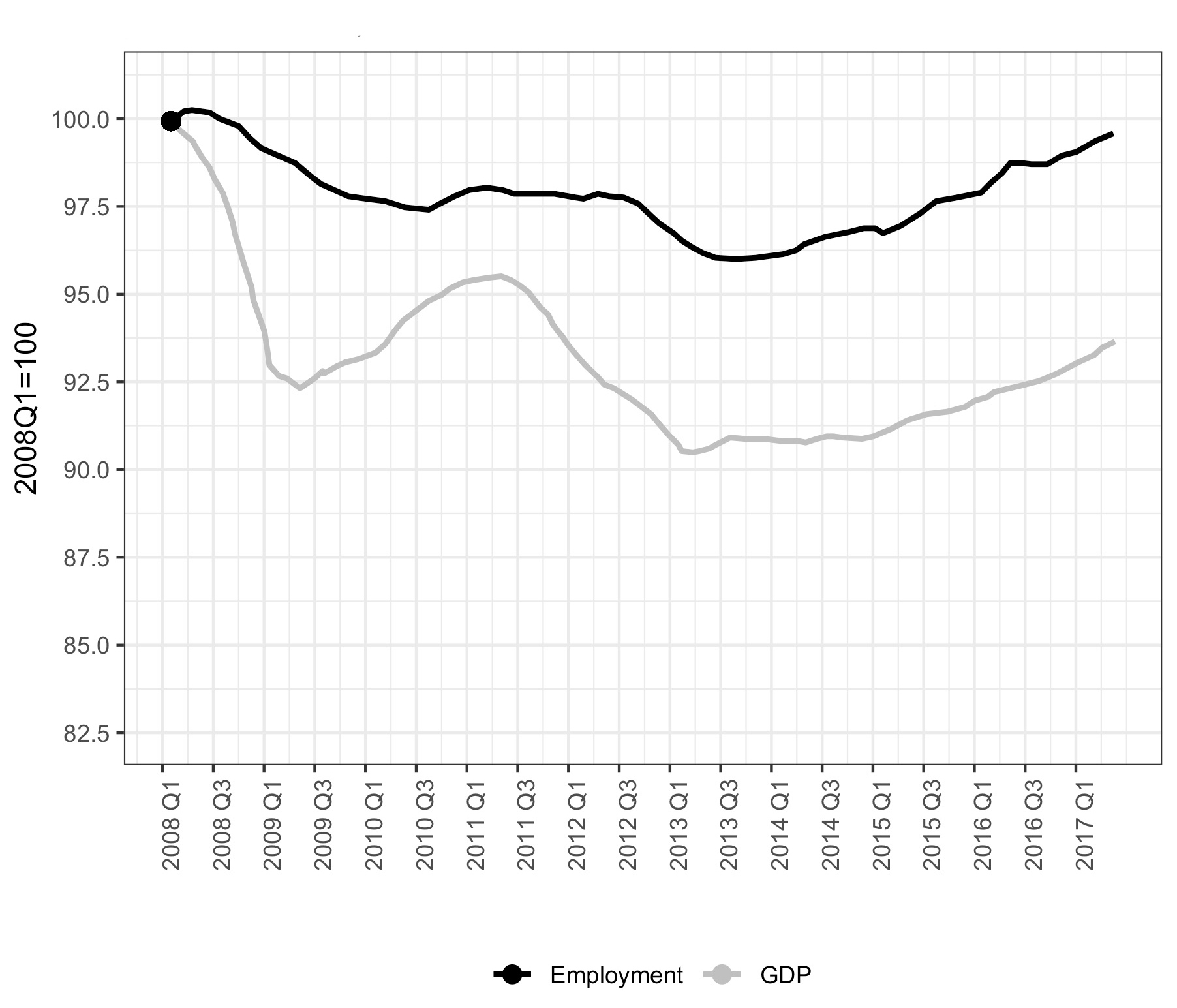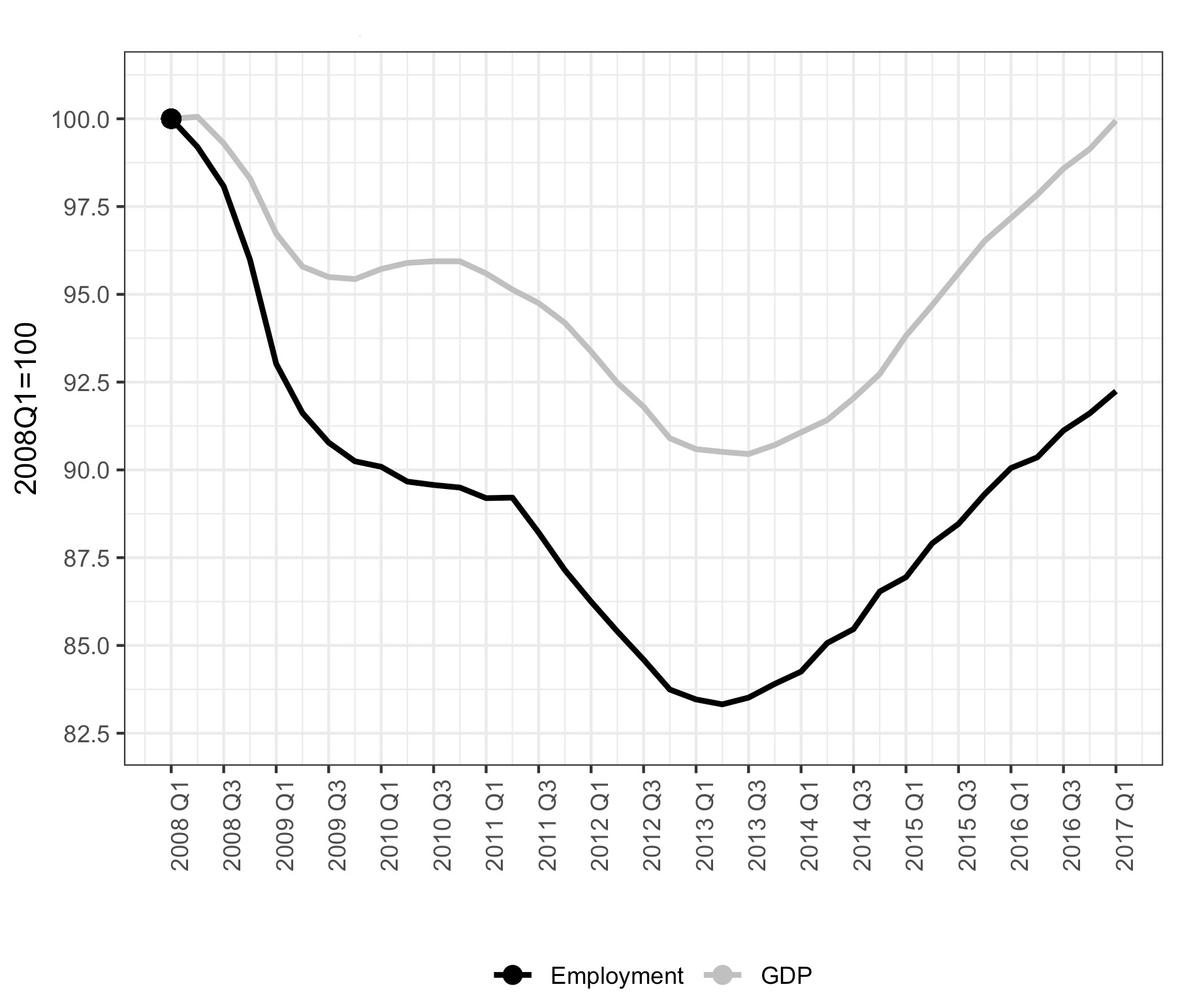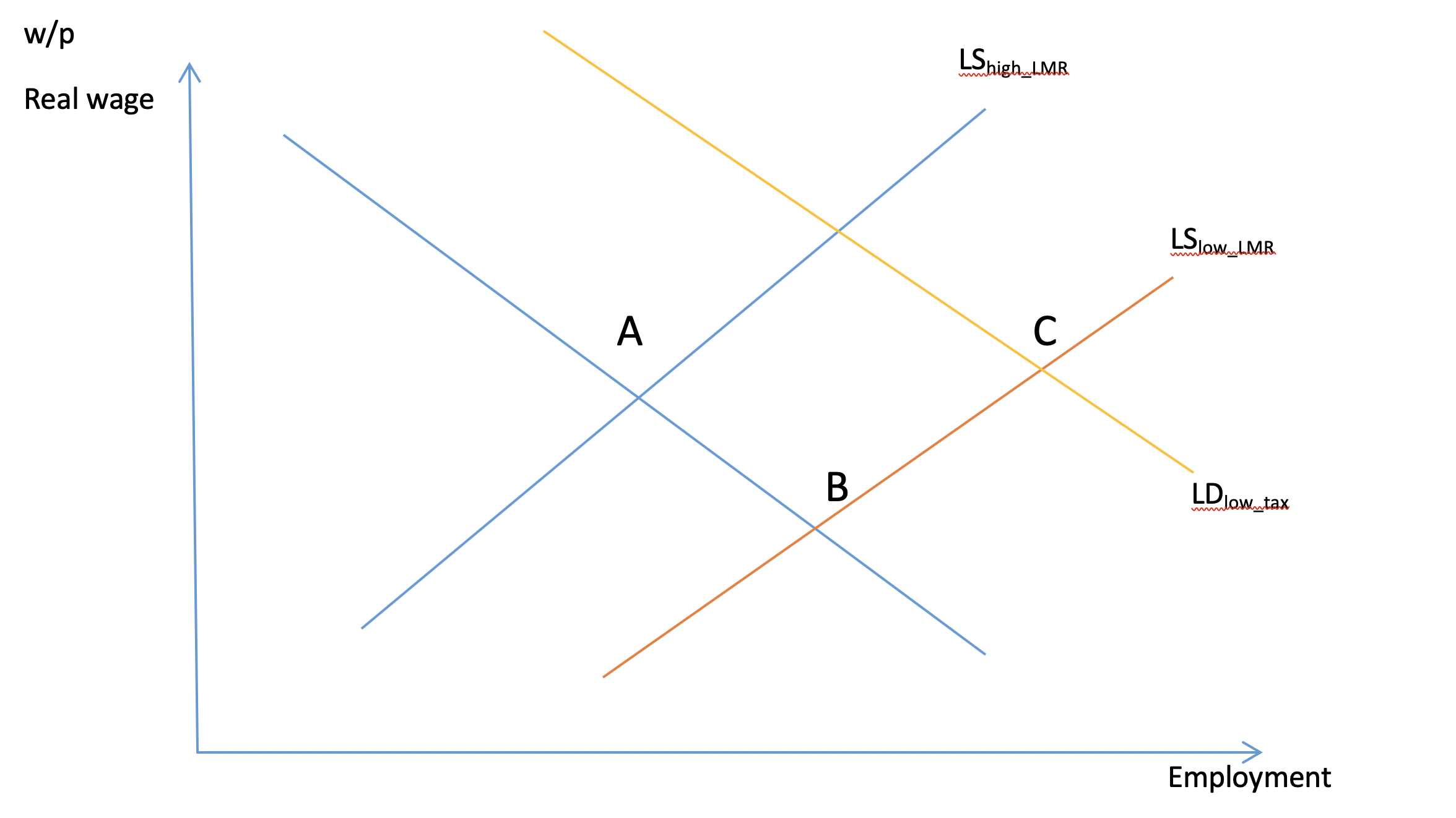
In the last decade, several EU countries have suffered from low economic growth, weak productivity, and declining competitiveness. Structural reforms that deregulate the labour market are thought to promote economic and employment growth. Cross-country analyses indicate that a lower labour tax wedge reduces unemployment in the long-run (see Lehmann et al 2015; OECD Taxation and Employment 2011). A close look at the experiences of countries such as Spain and Italy shows a high degree of complementarity between changes in taxation and in labour market regulation. Yet their effects on employment growth remain understudied. In a recent research article we try to address this issue.
There is a large literature on labour market reforms and taxation policies. While scholars mostly agree that economies with flexible labour markets and low taxation rates sustain employment and economic growth, the cross-country heterogeneity of these effects remains a puzzle. One argument that supports the heterogeneity in reform effects is related to the complementarity of different reforms. To put it differently, an economy can benefit from a structural reform in one specific area, if another area has already been liberalised or is also undergoing reform in the same direction. In the past, much effort has been devoted to understanding the interaction between labour and product market reforms. Our research aims to investigate this complementarity issue by looking at other important reform areas in the recent EU reform agenda, i.e. labour market reforms and changes in taxation.
First, Italy and Spain provide two very interesting cases in recent years, where reform complementarity may have played a key role in reducing labour market dualism and fostering employment growth. In the Italian Jobs Act of 2014-2015, new regulations on lowering firing costs and making them less uncertain were combined with generous hiring subsidies. The Jobs Act made employment protection legislation less restrictive when compared to France and Germany, both on open ended and temporary contracts according to the OECD indicators. For the Spanish Labour Market Reform of 2012, one can observe similar patterns. The crisis hit job creation hard and trends for new permanent contracts have started to diverge since then.
The problem in the current analysis is that we do not know the actual causal effects of these reform efforts. There are many other factors, one important factor being related to the business cycle. Figures 1a and 1b shows the dynamics of output and employment for the years between 2008 and 2017 in Italy and Spain respectively. Although the employment rates in Italy and Spain seem to be highly correlated with GDP growth, it is difficult to conclude if the recovery of employment is due to structural reforms or to business cycle fluctuations.
Figure 1. Dynamics of output and employment in Italy and Spain (2008Q1-2017Q1)
A. In Italy

Source: Data elaborated from “The Recent Reform of the Labour Market in Italy: A Review”, European Economy Discussion Paper 072, December 2017, European Commission, DG for Economic and Financial Affairs
B. In Spain

Source: Employment and GDP data from Federal Reserve Bank of St. Louis.
Second, we provide a theoretical model similar to Danninger and Berger (2007) to understand the complementarity and the sequencing impacts of labour market and taxation reforms on the economy. Consider a simple labour demand and supply model, where a closed economy is currently at equilibrium A with a high degree of labour legislation rigidity (Figure 2). Policy-makers then decide to reduce the strictness of labour regulation, which leads to a shift of the labour supply curve. The new equilibrium at B is characterised by a lower real wage and a higher employment rate than the previous equilibrium, point A. This positive effect on employment is enhanced by lowering taxes on labour. The latter has the effect of shifting the demand for labour to the right. We obtain a new equilibrium in point C where labour market reform and taxation have complementary effects on employment. This theoretical discussion allows us to understand that changes in labour market regulation can be seen as complementary to tax reforms in affecting employment across the European Union.
Figure 2. Employment, labour market regulation and taxation

Third, to estimate the size of the complementarity effects and the individual effect from each reform, we use the unrestricted dynamic model of Berger and Danninger (2007). We cover a large number of EU countries (including new member states that joined after 2004) and also use the most recent data in our econometric analysis. The empirical results point at a positive and significant interaction effect. We also observe differentiated effects depending on specific employment protection and type of labour market reform, whereas the analysis replicated with the European Commission’s LABREF datasets provides a more mixed picture.
While we are aware that the evidence above has a number of limitations, there are several policy-relevant implications which revolve around the key role played by complementarity. We find it a fundamental but often understudied aspect in the reform debate, perhaps with the exception of the case of the interaction between product and labour market regulation. As highlighted in the evidence on Italy and Spain, complementarity has delivered enhanced labour market outcomes and this seems to be the case also in more recent reform attempts such as those undertaken in France, where complementarity between labour market reforms and tax incentives for new forms of labour contracts has been considered extensively in the legislative efforts.
♣♣♣
Notes:
- This blog post is based on the authors’ chapter forthcoming in N. Campos, P. De Grauwe and Y. Ji (eds.), Structural Reforms and Economic Growth in Europe, Cambridge University Press.
- The post expresses the views of its author(s), not the position of LSE Business Review or the London School of Economics.
- Featured image by Riccardo.salvini, under a CC-BY-4.0 licence
- When you leave a comment, you’re agreeing to our Comment Policy






I can see lots of good reasons why you would want to introduce more flexibility and reduce labour market dualism in economies like Italy and Spain, but there are some more questionably simplistic assertions being made. Germany has a high employment rate and also strong labour market protections, as do the Nordics though they rely more heavily on extensive collective bargainning. They also have high employment taxes. The US has weak employment protection, and low employment taxes, but also a significantly lower employment rate and off the scale wage inequality. Designing a better labour market calls for a more sophisticated approach than the article suggests.